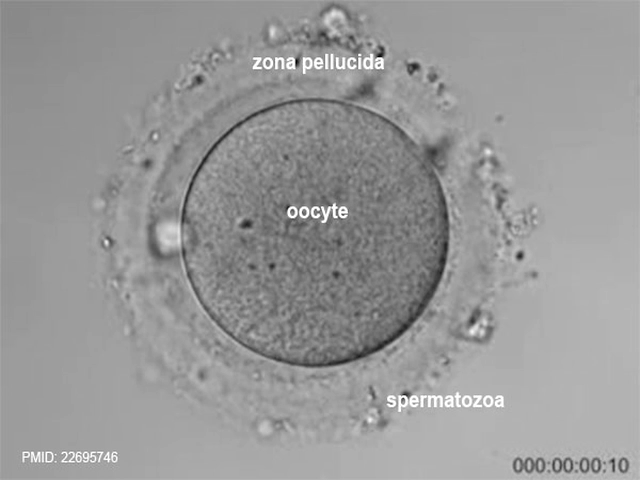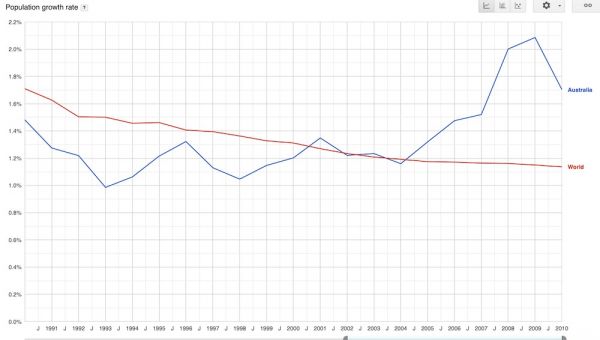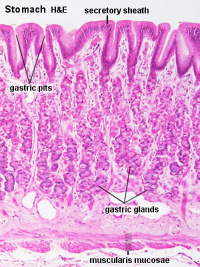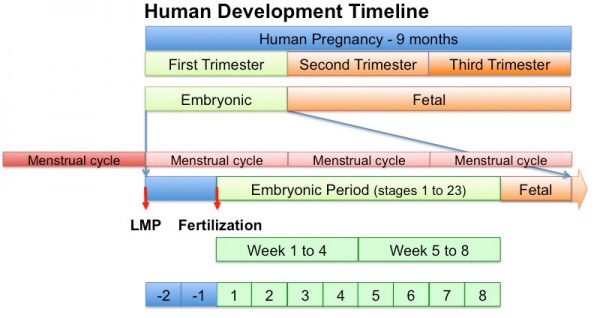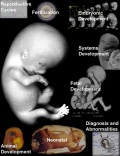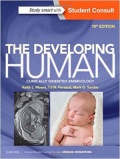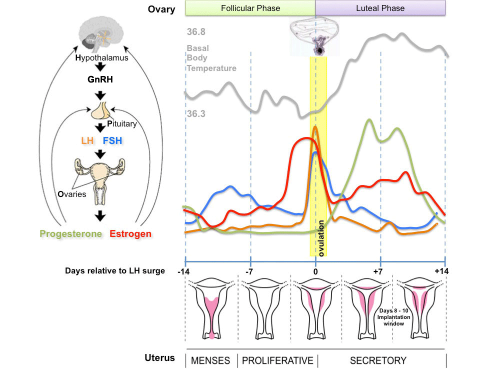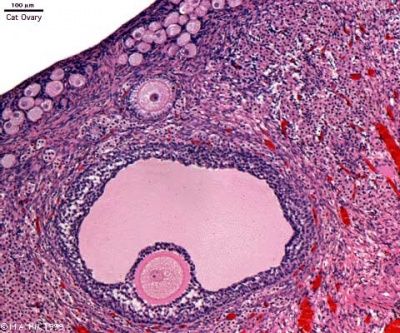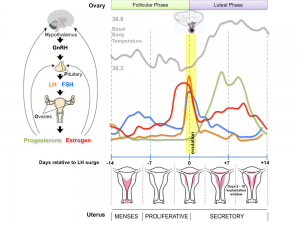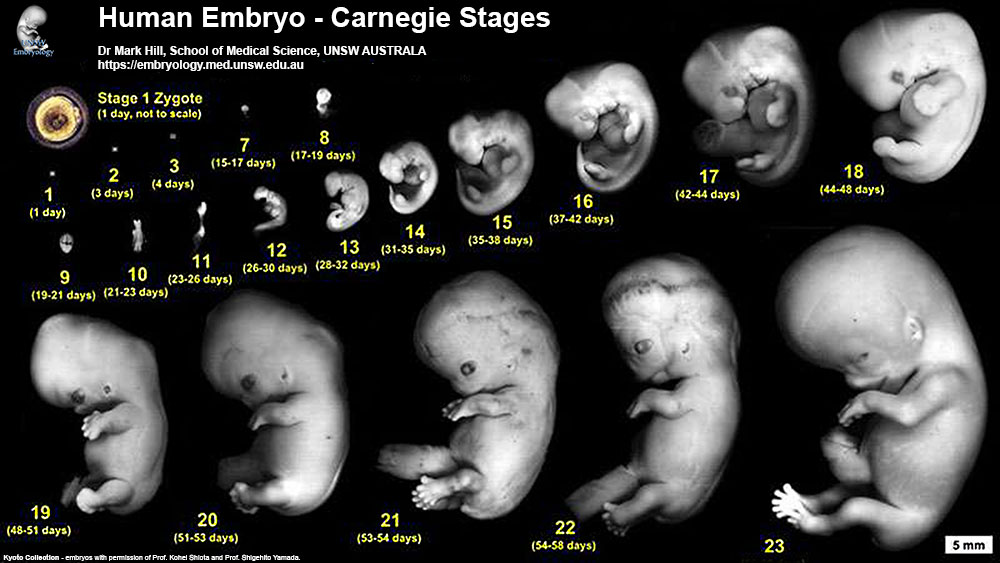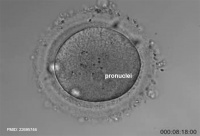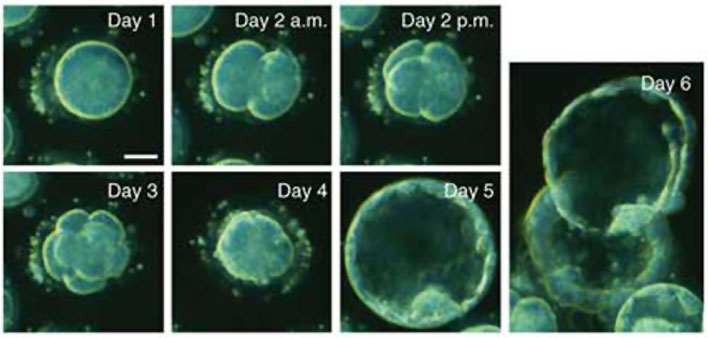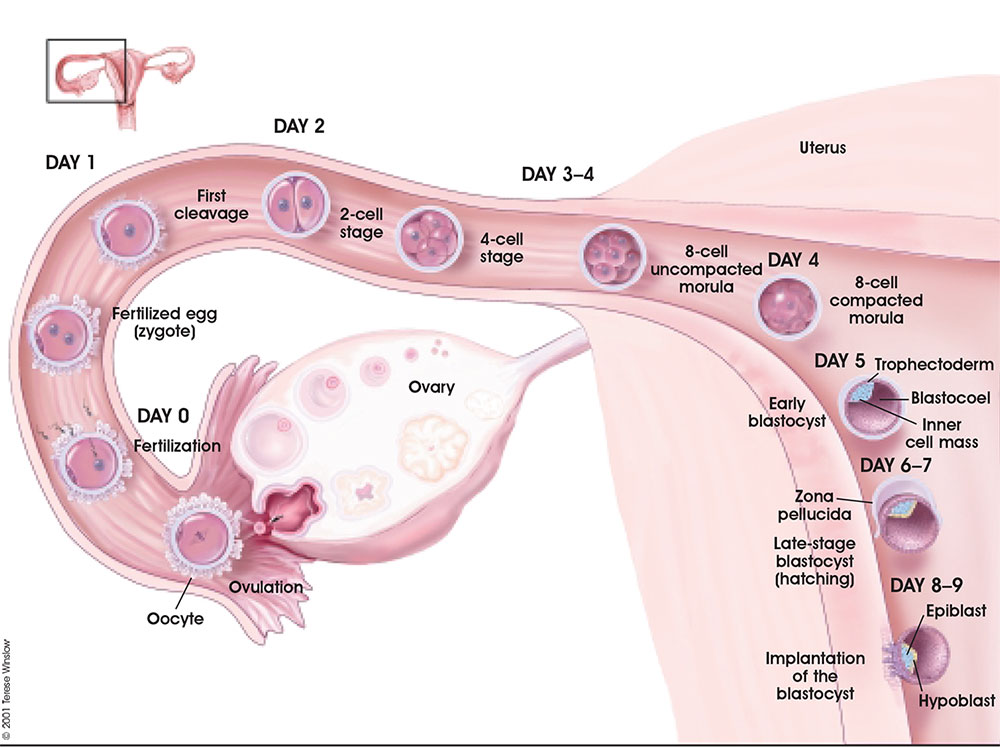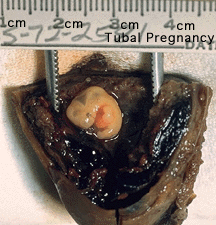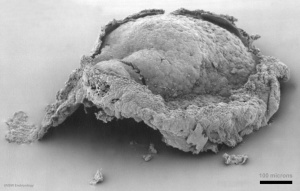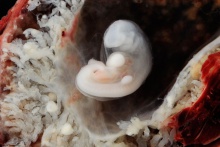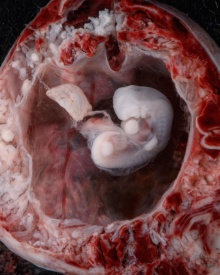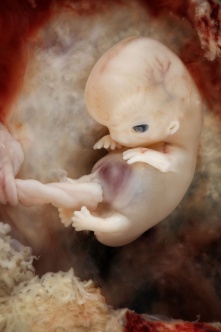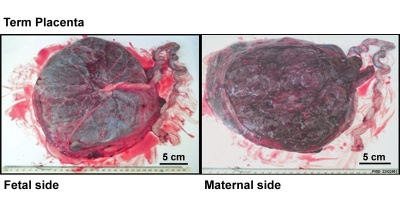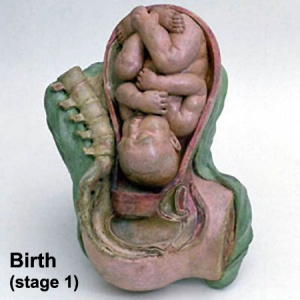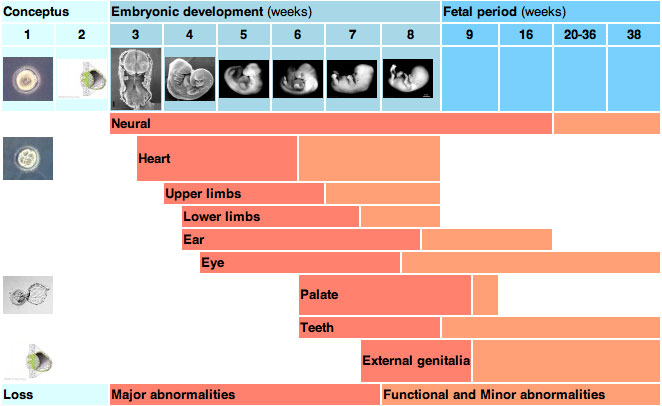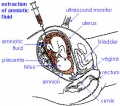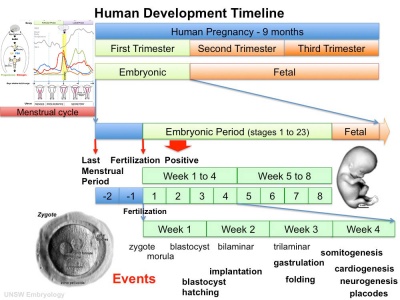Foundations Lecture - Introduction to Human Development
| Embryology - 27 Apr 2024 |
|---|
| Google Translate - select your language from the list shown below (this will open a new external page) |
|
العربية | català | 中文 | 中國傳統的 | français | Deutsche | עִברִית | हिंदी | bahasa Indonesia | italiano | 日本語 | 한국어 | မြန်မာ | Pilipino | Polskie | português | ਪੰਜਾਬੀ ਦੇ | Română | русский | Español | Swahili | Svensk | ไทย | Türkçe | اردو | ייִדיש | Tiếng Việt These external translations are automated and may not be accurate. (More? About Translations) |
Introduction
Human development is one of the most exciting topics to study not only as a medical student, but also for our fundamental understanding of the human body. Of all health issues in Medicine, fertility and reproduction is a topic that will affect everyone. This lecture is going to take you briefly through key biological concepts in human development, these will later be explored in more detail through the BGD course. I will be using simplified terms in the lecture slides (with developmental term in brackets).
| Australian Population Clock - 25,278,727 |
|---|
| On 5 March 2019 at 10:36:24 AM (Canberra time), the resident population of Australia is projected to be:
|
| Australia and the World (2010)
Population Growth Rate | Fertility Rate | AUS, CHN, IND, IDN, USA | World Growth |
The lecture will be followed by a practical class introducing online resources for independent study and working through basic embryology concepts.
- Links: 2018 | 2018 PDF | 2017 | 2017 PDF | Printable Lecture Page | 2016 | 2015 | 2014 | 2013 | 2012
| Other Foundations links |
|---|
| The following lecture, practical and practical support pages for Foundations can be found on this current site.
|
Aims
|
<html5media height="260" width="320">File:1 Min Embryo - Find Embryology.mp4</html5media> |
Four Basic Tissue Types
In histology you have heard that tissues and organs of the body consist of combinations of 4 basic tissue organisations:
|
|
Human Development Timeline
| Last Menstrual Period (LMP) first day was today -> Birth Date - January 6, 2020 |
|---|
Gestation Calculation (based upon a normal 28 day cycle)
|
Embryology Education Support
UNSW Embryology Online
| <html5media height="384" width="352">File:Human development 001.mp4</html5media> |
|
Using these resources (online navigation, organization and printing) will be covered in the introduction to the associated Practical class.
Glossary Links
- A | B | C | D | E | F | G | H | I | J | K | L | M | N | O | P | Q | R | S | T | U | V | W | X | Y | Z | Numbers | Symbols
Practical pages general have a list of brief definitions of terms that appear on the current page, or more complete collapsed tables of terms.
Terms - highlighted text terms link to other content pages that relate to that specific term. Note that these linked pages do not generally form part of your examinable content, and are provided to aid your understanding of the concepts.
Textbooks
- There are many different excellent embryology textbooks.
- I have included below embryology textbooks accessible online through the UNSW Library that cover the clinical topics as well.
- As an introduction try the chapter in The Developing Human - Introduction to the Developing Human
| The Developing Human: Clinically Oriented Embryology (10th edn) |
|---|
|
UNSW Students have online access to the current 10th edn. through the UNSW Library subscription (with student Zpass log-in).
|
|
| Ebook - Kyoto Collection (1st edn) | |
|---|---|
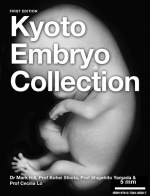
|
UNSW students can download this free iBook that describes embryos from the first 8 weeks of development showing whole embryos, histological features, movies and high resolution 3D scans. The iBook also contains a linked glossary with descriptions of embryology terminology, and related terms.
Note - Only available for the Apple iPhone, iPad and laptop and desktop computers. No PC version currently available.
|
Human Reproductive Cycle
- Meiosis in gonad produces haploid gametes
- testis the sperm (spermatozoa)
- ovary the egg (oocyte)
- there are key differences in when and how gametes are formed in the male and female gonad.
Female
- menstrual cycle a regular cycle of reproduction (28 days)
- begins at puberty
- all oocytes produced before birth
- release of 1 egg (oocyte) every cycle
- Endocrine controlled axis: Hypothalamus - Pituitary - Gonad (HPG axis)
Male
- begins at puberty
- continuous production of sperm (spermatozoa, human male 2,000/second)
- release millions of spermatozoa (require activation, capacitation)
| Testis Pre-Puberty | Testis Post-Puberty |
|---|---|
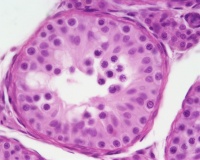
|
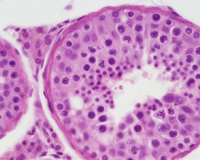
|
Ovary
- Paired organs
- lying in the peritoneal cavity
Ovulation
- ovulation is the release of the egg (oocyte) at about the middle of the menstrual cycle
Human ovulation
Trimesters
|
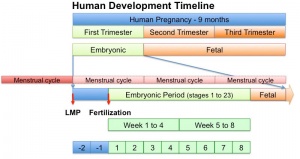
|
First Trimester
- Embryonic Period - Week 1 to 8 (first trimester)
- Establish the basic structure of organs and tissues (Organogenesis)
- development and growth of the placenta (Placentation)
Fertilization
- the process of the 2 haploid gametes (egg and sperm) fusing and combining their genetic material.
- conceptus - the entire product of fertilisation.
Week 1
- (GA week 3)
- occurs freely floating in uterus
- occurs during week 1 following fertilization
- last menstrual period (LMP) week 3
- mitosis to form solid ball of cells (morula), then hollow ball (blastocyst)
Week 2
(GA week 4)
- implantation - initial attachment to uterine wall, and then invasion of the uterine wall. Note - this is where the placenta will form.
Normal Implantation
- Uterine body
- posterior, anterior, superior, lateral (most common posterior)
- inferior implantation - placenta overlies internal os of uterus Placenta Previa
Abnormal Implantation
- Ectopic Sites
- external surface of uterus, ovary, bowel, gastrointestinal tract, mesentery, peritoneal wall
- If not spontaneous then, embryo has to be removed surgically
- Uterine - tubal pregnancy (most common ectopic)
Detect Pregnancy
- Clinically can be detected following implantation (week 2)
- Last Menstrual Period (LMP) - today ? ....... Birth Date - January 6, 2020

|
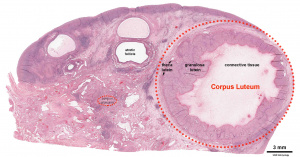
|
| Pregnancy test (maternal urine) | Ovary - corpus luteum secretes hormone (hCG) to support pregnancy |
Week 3
- (GA week 5)
- 4 Key processes commence
1. Gastrulation
- the formation of the 3 layer embryo (trilaminar embryo)
- All tissues of the body are formed from these 3 embryonic tissue layers (germ layers)
- ectoderm (epithelium) - forms the central and peripheral nervous system and epithelium of the skin
- mesoderm (connective tissue) - forms the body connective tissues: blood, bone, muscle, connective tissue skin, gastrointestinal and respiratory tracts
- endoderm (epithelium) - forms epithelium of the gastrointestinal and respiratory tracts, gastrointestinal tract and endocrine organs
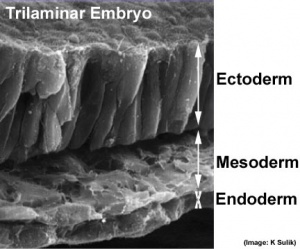
|
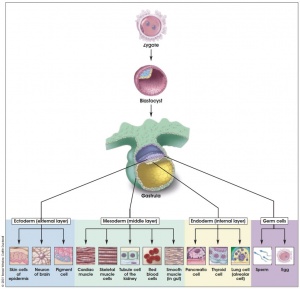
|
2. Somitogenesis
- segmentation of the mesoderm into somites
- forms the axial body plan
3. Neuralation
- segmentation of the ectoderm
- separates the neural tissue from the skin (epidermis)
4. Folding
- folding of the whole embryonic disc
- all edges of the disc fold ventrally
- left and right of the disc come together to form a "tube" of the 3 layers
- top and bottom of the disc bend to form a "C" shaped embryo.
Week 4
|
|
|
|
|
Week 5 to 8
- early development of the other organs, tissues and limbs
| Week 5 | Week 8 | ||||||||||||||||||
|---|---|---|---|---|---|---|---|---|---|---|---|---|---|---|---|---|---|---|---|
|
|
|
|
|
Placenta
- Materno/fetal organ
- No exchange of blood
- Many different roles
- can be "sampled" as part of a prenatal diagnostic test
- interaction between implanting conceptus and uterine wall (endometrium)
- The uterine lining following implantation (Decidua)
- forms 3 distinct regions, at approx 3 weeks
- Decidua Basalis - implantation site
- Decidua Capsularis - enclosing the conceptus
- Decidua Parietalis - remainder of uterus
- uterine cavity is lost by 12 weeks
Second and Third Trimester
- Week 9 to 37 - Fetal Development
- Continuing growth and differentiation of organs formed in embryonic period
- some organs have a later development - neural, genital, respiratory, bones
- some continue to develop after birth - neural, genital, respiratory, bones
- growth in size, length (Second Trimester)
- growth in weight (Third Trimester)
Postnatal Development
Birth
- birth (parturition) is a complex physiological process between the fetus and mother
- thought to be initiated by the fetus
Maternal Birth Stages
- Dilatation
- Expulsion
- Placental
- Recovery
Australian Birth Rate 1998-2007
Newborn
Newborn (perinatal) needs to activate many systems and establish independent regulation (homeostasis)
- Lung function - Fluid drainage, Gas exchange, muscular activity, continued development
- Circulatory changes - Closure of 3 vascular shunts
- Thermoregulation - metabolic rate, fat metabolism
- Nutrition - gastrointestinal tract function, peristalsis, continued development
- Waste - kidney function, continued development
- Endocrine function - loss of placenta, maternal hormones, continued development
Abnormal Development
Critical Periods of Development
Three main causes:
- Genetic
- Environmental
- Unknown
- First trimester most critical
- Different effect depending on time of insult (teratogen)
Diagnosis
- Maternal diagnosis - often pregnancy will expose maternal health problems
- Prenatal diagnosis - number of different techniques (non-invasive, invasive) for determining normal development
- Neonatal diagnosis - (Apgar test, Guthrie test), hearing test
- Prenatal Diagnosis
- Postnatal Diagnosis
Finished! Now lets get ready for the Foundations Practical!
Additional Information
| Additional Information - Content shown under this heading is not part of the material covered in this class. It is provided for those students who would like to know about some concepts or current research in topics related to the current class page. |
Revision Notes
- You don't need to know everything today, this is an introduction.
- Use the glossary to help understand new terms.
- Don't confuse "germ cell layers" (ectoderm, mesoderm, endoderm) with the "germ cells" (oocyte, spermatazoa).
- Remember the difference between "clinical weeks" (last menstral period) and "embryonic weeks" (from ovulation/fertilisation, 2 weeks later).
- With abnormalities
- think about the types of prenatal dianostic techniques that are now available
- the 2 major types (genetic and environmental) and the unknown??
- the effect of maternal age/health/lifestyle.
Textbooks

|
Hill, M.A. (2020). UNSW Embryology (20th ed.) Retrieved April 27, 2024, from https://embryology.med.unsw.edu.au
|

|
Citation: Moore, K.L., Persaud, T.V.N. & Torchia, M.G. (2015). The developing human: clinically oriented embryology (10th ed.). Philadelphia: Saunders.
UNSW Students have online access to the current 10th edn. through the UNSW Library subscription. Links: UNSW Library | NLM ID: 101649439 Chapter 1 - Introduction to the Developing Human |

|
Schoenwolf, G.C., Bleyl, S.B., Brauer, P.R., Francis-West, P.H. & Philippa H. (2015). Larsen's human embryology (5th ed.). New York; Edinburgh: Churchill Livingstone.
UNSW students have full access to this textbook edition through UNSW Library subscription (with student Zpass log-in). Read the introduction before Chapter 1. |
![]() Foundations Practical - Introduction to Human Development
Foundations Practical - Introduction to Human Development
Glossary Links
- Glossary: A | B | C | D | E | F | G | H | I | J | K | L | M | N | O | P | Q | R | S | T | U | V | W | X | Y | Z | Numbers | Symbols | Term Link
Cite this page: Hill, M.A. (2024, April 27) Embryology Foundations Lecture - Introduction to Human Development. Retrieved from https://embryology.med.unsw.edu.au/embryology/index.php/Foundations_Lecture_-_Introduction_to_Human_Development
- © Dr Mark Hill 2024, UNSW Embryology ISBN: 978 0 7334 2609 4 - UNSW CRICOS Provider Code No. 00098G


